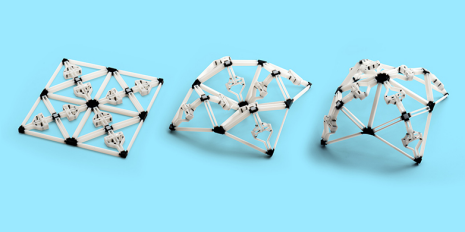Swiss scientists pioneer 3D printing with live organisms

A 3D printing platform incorporates living bacteria into the ink, resulting in structures with a range of useful properties that can be targeted for biomedical, environmental, and sanitation applications.
Research into three- and four-dimensional printing methods has been advancing rapidly in recent years, but materials scientists at the Swiss Federal Institute of Technology ETH Zurich have added a brand new twist – by adding bacteria to their ink. This technique allows them to generate “living materials” with different biochemical properties, depending on the organisms used.
So far, the researchers, led by André Studart in ETH Zurich’s Laboratory for Complex Materials, have developed four different inks using different concentrations of Pseudomonas putida and Acetobacter xylinum. Both species are harmless to humans, and indeed have very useful properties: P. putida can break down toxic compounds used in the chemical industry, and A. xylinum secretes a type of bacterial cellulose that relieves pain and retains moisture, making it perfect for medical applications.
“Printing using bacteria-containing hydrogels has enormous potential, as there is such a wide range of useful bacteria out there,” said Patrick Rühs, an ETH Zurich professor of complex materials, in an institute press statementExternal link. “Most people only associate bacteria with diseases, but we actually couldn’t survive without [them].”
Rühs is a lead author on a paper presenting this research, which was published last week in the journal Science AdvancesExternal link.
‘Flink’
Rühs and his colleagues have dubbed their innovation “Flink” for “functional living ink”. It’s created by adding the bacteria to a structured water-based gel, or hydrogel, containing basic ingredients like sugar molecules that the organisms need to survive.
The trick is achieving an ink that is thick enough to generate sound three-dimensional structures, yet liquid enough to create a suitable environment for the bacteria.
“The ink must be as viscous as toothpaste and have the consistency of Nivea hand cream,” explained Manuel Schaffner, another lead author, in the statement.
The researchers hope their new ink will be used to produce a range of useful objects, from 3D-printed sensors for detecting pollutants in drinking water, to filters for cleaning up oil spills and medical treatments for burns.
Future challenges include improving scalability and printing time, as well as studying how long these ‘printed minifactories’ can ‘live’. But since bacteria require few resources, it’s believed they will be able to survive in the 3D printed structures for a long time.

In compliance with the JTI standards
More: SWI swissinfo.ch certified by the Journalism Trust Initiative













You can find an overview of ongoing debates with our journalists here . Please join us!
If you want to start a conversation about a topic raised in this article or want to report factual errors, email us at english@swissinfo.ch.